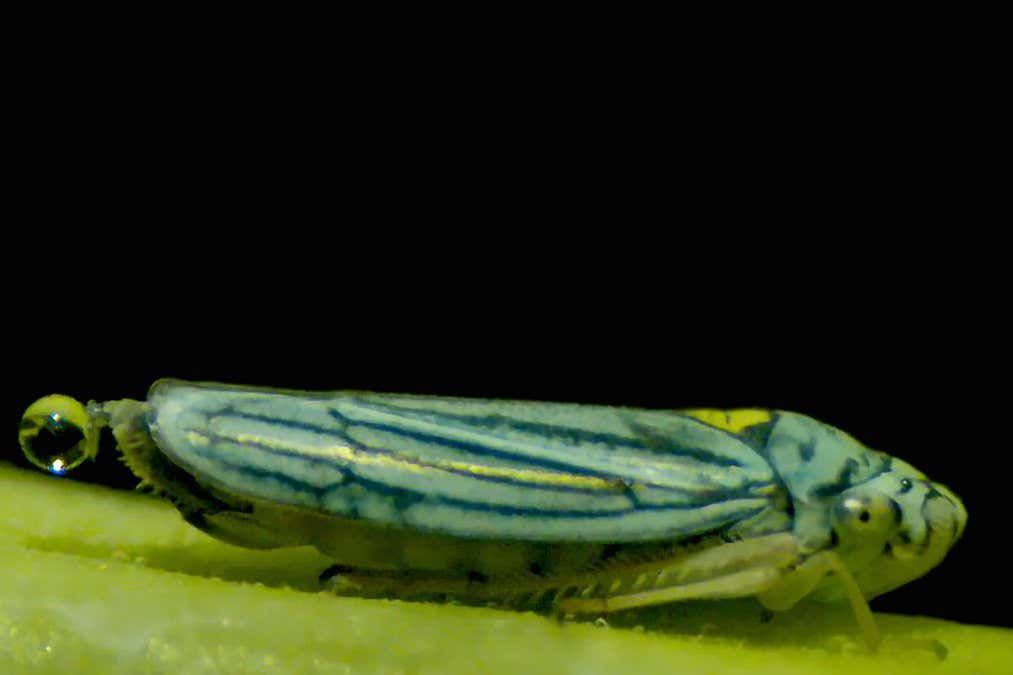Miniature Marvels: The Surprising World of Insect Urine and Anal Catapults
The insect world is teeming with bizarre and fascinating adaptations. While we might often overlook these tiny creatures, their lives are filled with incredible strategies for survival, reproduction, and communication. Today, we delve into two particularly intriguing examples: insect urine and anal catapults. These seemingly insignificant features reveal a surprising level of complexity and ingenuity in the miniature world.
Insect Urine: More Than Just Waste
We tend to think of urine as simply waste product, but for insects, it's much more. Different species utilize urine in surprisingly diverse ways:
- Communication: Some insects use urine to mark territory, leaving behind chemical signals that warn off rivals or attract potential mates. The composition of the urine, varying with diet and species, carries unique information.
- Defense Mechanisms: Certain insects employ urine as a deterrent against predators. The liquid might be toxic, foul-smelling, or even sticky, providing a crucial advantage in the fight for survival.
- Environmental Adaptation: In arid environments, some insects carefully manage water loss, utilizing urine to conserve precious bodily fluids. This efficient strategy allows them to thrive in harsh conditions.
- Nutrient Recycling: In social insects like ants and termites, urine plays a role in nutrient recycling within the colony. Waste products are often processed and reused, maximizing resource utilization.
Understanding the nuances of insect urine requires sophisticated scientific techniques, including gas chromatography-mass spectrometry (GC-MS) and high-performance liquid chromatography (HPLC), to analyze its complex chemical composition. Further research in this area is crucial for unlocking the secrets of insect communication and adaptation.
Anal Catapults: A Surprisingly Effective Weapon
While less common than urine-based strategies, some insects have evolved an entirely different defense mechanism: the anal catapult. This remarkable adaptation involves the expulsion of a sticky, foul-smelling secretion with considerable force.
- Predator Deterrence: The sudden, forceful ejection of this substance startles and repels potential predators, giving the insect precious time to escape. The sticky nature of the secretion can further hinder the predator's pursuit.
- Species-Specific Adaptations: The exact composition and effectiveness of the anal catapult vary widely between species, reflecting the diverse pressures of their respective environments and predators.
- Evolutionary Arms Race: The development of anal catapults is a clear example of an evolutionary arms race, where insects continuously adapt and evolve new defense strategies in response to the threats they face.
Further Research and Conservation
The study of insect urine and anal catapults is not merely an academic exercise. Understanding these miniature marvels can offer valuable insights into:
- Pest Control: By understanding the communication strategies of insects, we can develop more effective and targeted pest control methods, reducing reliance on harmful pesticides.
- Biomimicry: The ingenious designs found in the insect world often inspire new technologies. The efficiency of insect water management or the mechanics of the anal catapult could inform the development of new materials or engineering solutions.
- Conservation Efforts: Protecting insect biodiversity is crucial for maintaining healthy ecosystems. Research into the unique adaptations of insects can help us better understand their ecological roles and develop more effective conservation strategies.
Conclusion:
The seemingly mundane aspects of insect physiology, like urine and anal secretions, often hide extraordinary complexity and ingenuity. By studying these miniature marvels, we gain a deeper appreciation for the incredible diversity of life on Earth and unlock potential benefits for various fields, from agriculture to engineering. Further research is vital to fully understand the wonders of the insect world and to ensure their continued survival.

